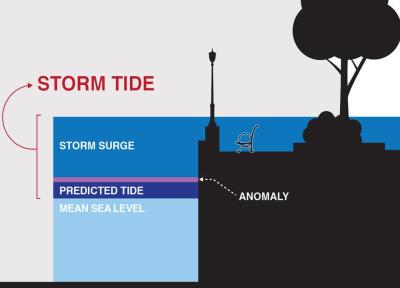
What is a storm surge?
According to the National Ocean Service (NOAA), storm surge is the abnormal rise in seawater level during a storm, measured as the height of the water above the normal predicted astronomical tide. The surge is caused primarily by a storm’s winds pushing water onshore. The amplitude of the storm surge at any given location depends on the orientation of the coast line with the storm track; the intensity, size, and speed of the storm; and the local bathymetry.
Storm tide is the total observed seawater level during a storm, resulting from the combination of storm surge and the astronomical tide. Astronomical tides are caused by the gravitational pull of the sun and the moon and have their greatest effects on seawater level during new and full moons—when the sun, the moon, and the Earth are in alignment. As a result, the highest storm tides are often observed during storms that coincide with a new or full moon.
Learn more about Storm Surge at https://www.nhc.noaa.gov/surge/.
